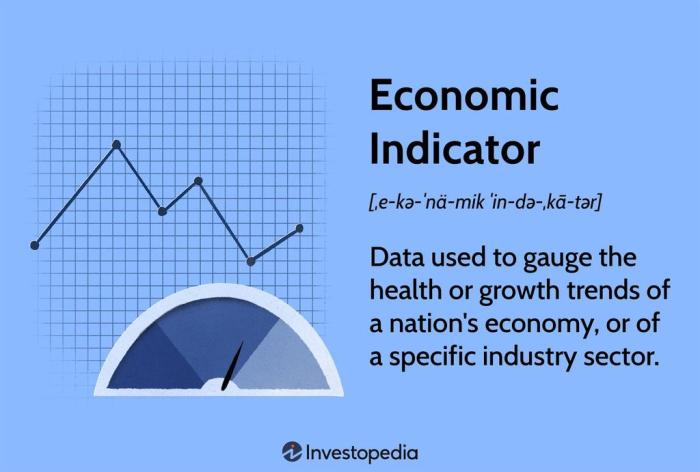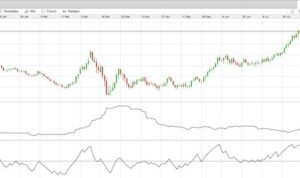Diving into the dynamic world of financial market trends, we embark on a journey filled with insights, analysis, and predictions that shape the investment landscape. From unraveling the concept to exploring the impact of technology and global events, this guide is your key to understanding the ever-evolving trends that drive financial markets.
As we delve deeper, we uncover the nuances of short-term and long-term trends, examine recent examples across asset classes, and dissect the risks and strategies associated with following these trends.
Overview of Financial Market Trends
Financial market trends refer to the general direction in which the financial markets are moving over a period of time. These trends can impact various asset classes such as stocks, bonds, commodities, and currencies.
Factors Influencing Financial Market Trends
- Economic Indicators: Factors such as GDP growth, inflation rates, and employment data can influence market trends.
- Central Bank Policies: Decisions made by central banks regarding interest rates and monetary policy can significantly impact market trends.
- Geopolitical Events: Events like wars, elections, or trade agreements can cause market volatility and influence trends.
- Market Sentiment: Investor emotions and perceptions about the market can also drive trends, leading to either optimism or pessimism.
Importance of Monitoring Financial Market Trends for Investors
- Identifying Opportunities: By tracking market trends, investors can identify potential investment opportunities and adjust their portfolios accordingly.
- Risk Management: Understanding market trends helps investors assess and manage risks associated with their investments.
- Maximizing Returns: Being aware of market trends allows investors to capitalize on market movements and make informed decisions to maximize returns.
- Staying Informed: Monitoring financial market trends helps investors stay informed about the overall health of the economy and make strategic investment decisions.
Types of Financial Market Trends
In the world of finance, market trends can be categorized into two main types: short-term and long-term trends. Each type has its own characteristics and implications for investors.
Short-Term vs. Long-Term Financial Market Trends
Short-term financial market trends refer to movements in asset prices over a relatively brief period, typically ranging from a few days to a few months. These trends are often driven by factors such as market sentiment, economic data releases, and company-specific news. Traders and speculators tend to focus on short-term trends to capitalize on quick price movements.
On the other hand, long-term financial market trends encompass price movements that occur over an extended period, usually spanning several months to years. These trends are influenced by broader economic conditions, geopolitical events, and structural changes in the market. Long-term investors typically pay attention to these trends to make informed decisions about their investment portfolios.
Examples of Recent Financial Market Trends
- Stocks: In recent months, technology stocks have experienced a significant uptrend, driven by strong earnings reports and investor optimism about the sector’s growth potential.
- Bonds: Government bond yields have been trending lower as central banks around the world maintain accommodative monetary policies to support economic recovery.
- Commodities: The price of gold has been on a steady rise amid concerns about inflation and geopolitical uncertainty, attracting investors seeking a safe-haven asset.
Impact of Global Events on Financial Market Trends
Global events, such as geopolitical tensions, natural disasters, and economic policy changes, can have a profound impact on financial market trends across different asset classes. For example, a trade war between two major economies can lead to increased market volatility and a shift in investor sentiment. Similarly, a global pandemic like COVID-19 can trigger a sell-off in risky assets and a flight to safety towards less volatile investments.
In conclusion, understanding the dynamics of short-term and long-term financial market trends, as well as the influence of global events, is crucial for investors looking to navigate the complex world of finance and make informed decisions about their investment strategies.
Technology and Financial Market Trends

Technology plays a significant role in shaping financial market trends. From algorithmic trading to AI and social media, these advancements have transformed the way markets operate and trends develop. Let’s delve deeper into how technology impacts financial market trends.
Algorithmic Trading and AI
Algorithmic trading, also known as algo trading, uses computer algorithms to execute trades at high speeds and frequencies. This technology allows for quick decision-making based on predefined criteria, leading to increased efficiency and accuracy in trading. Similarly, artificial intelligence (AI) analyzes vast amounts of data to identify patterns and make predictions, helping traders make informed decisions. Both algorithmic trading and AI contribute to the fast-paced nature of financial markets and influence trends accordingly.
Social Media’s Influence
Social media platforms have become essential sources of information for investors and traders. News, opinions, and market sentiments shared on platforms like Twitter, Reddit, and financial forums can impact market movements. The viral spread of information through social media can lead to rapid changes in market trends, as investors react to breaking news and popular sentiment. Understanding and monitoring social media trends is crucial for predicting and adapting to shifts in financial markets.
Importance of Data Analytics
Data analytics plays a vital role in predicting financial market trends. By analyzing historical data, market behavior, and external factors, data analytics tools can identify patterns and correlations that help forecast future trends. Traders and investors use data analytics to make informed decisions, manage risks, and capitalize on opportunities in the market. The ability to interpret and act upon data insights is crucial for staying ahead of trends and maximizing returns in the dynamic financial landscape.
Risks Associated with Financial Market Trends
When it comes to following financial market trends, there are certain risks that investors need to be aware of in order to make informed decisions and mitigate potential losses.
One common risk associated with financial market trends is volatility. Market trends can change rapidly, causing prices to fluctuate erratically and potentially leading to significant losses for investors.
Another risk is the impact of external factors such as economic conditions, geopolitical events, and regulatory changes. These external factors can influence market trends and create uncertainty for investors.
To mitigate risks when investing based on financial market trends, it is important to conduct thorough research, diversify your portfolio, and have a clear risk management strategy in place. Diversification involves spreading your investments across different asset classes, industries, and regions to reduce the impact of any single market trend on your overall portfolio.
By diversifying your investments, you can help manage risks related to financial market trends and potentially protect your portfolio from significant losses. It is essential to stay informed, stay cautious, and be prepared to adjust your investment strategy as market trends evolve.






